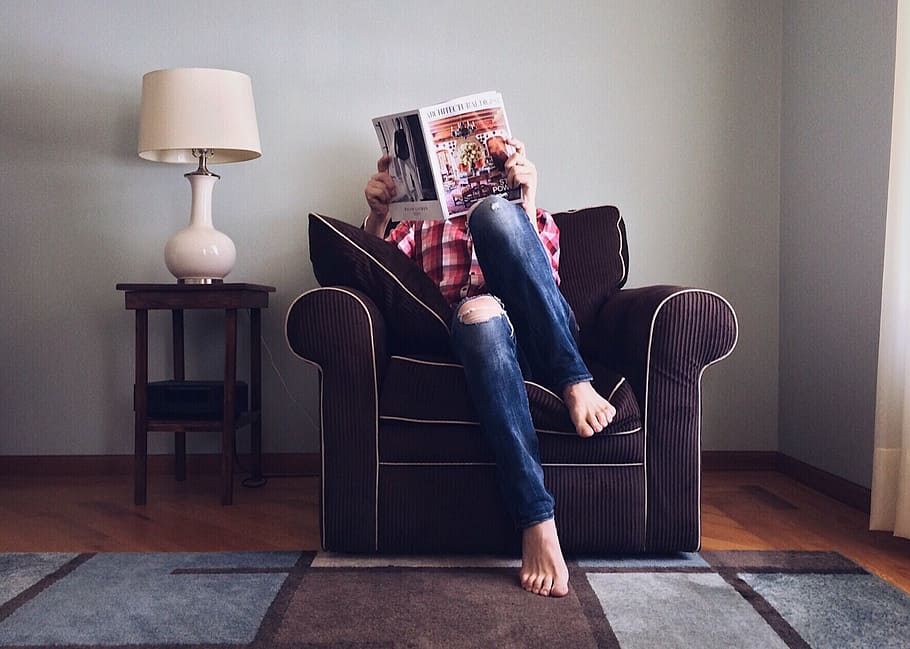There’s no place like home, author Frank Baum’s Dorothy said, but then again, she wasn’t confined to hers during a multi-month global pandemic.
Still, recent research by two Hope psychology scholars has confirmed that that famous line from The Wizard of Oz has bearing not only when you miss home, but also when that space is primarily where you must stay.

Dr. Alyssa Cheadle, assistant professor of psychology, and Dr. Benjamin Meagher, visiting scholar of psychology and assistant professor of psychology at Kenyon College, wrote in the Journal of Environmental Psychology that “in the midst of increased mental health concerns and limited resources due to COVID-19, the home may buffer some individuals from depressive and anxiety-related symptoms by functioning as a source of refuge, security, and stability.”
To reach that finding, the two Hope scholars quickly went to work to research the relationship between home attachment and mental health when the pandemic began to keep people in their homes for long periods due to stay-at-home orders and business and educational closures last March. In their article “Distant to Others, But Close to Home,” Cheadle and Meagher noted that “although people by and large tend to show some degree of attachment to their home, such an emotional bond is not universal.”

Creating opportunities for heightened mental health via home attachment could be just one small home improvement project away.
How then can we consider our homes as emotional safe havens during a pandemic and not just as places where we have to be?
“Something we would want people to try to do is be conscious of the way in which the home space they are in matters to their mental health,” says Cheadle. “I think a lot of people don’t necessarily reflect on it in a deliberative way. But changing the way we think about the spaces in our lives as potential resources – and not spaces that are just ‘there’ – can help us feel better.”
To reach that recommendation through research, Meagher, an environmental psychologist, and Cheadle, a health psychologist, enlisted 289 participants to take surveys in three waves (baseline, two weeks four weeks) via Amazon Mechanical Turk (MTurk), a crowdsourcing website for businesses (and researchers) to hire remotely located “crowd-workers” to perform discrete, online tasks. Their respondents were located nationwide, ages 19 to 72, a little more than half male, and a majority Caucasian. “That make-up was just by virtue of who signed up for the study,” says Meagher.
Cheadle and Meagher then asked those participants to make judgments about their homes. This included indicating how strongly attached participants feel towards their home, as well as rating the emotional ambience of their home across four categories: restoration, kinship, stimulation and productivity. Each participant also completed a standardized questionnaires about depressive symptoms, anxiety symptoms and perceptions of stress.
Using those survey tools to both assess participants’ home attachment and mental health, the two researchers came to an important conclusion about home attachment regarding kinship ambience in particular. What is kinship ambience? It is that feeling you get when you associate a certain person, or people, with a particular space.
“If my home is able to meet that need (of kinship with others) over the course of this pandemic, then the space will become more and more important to me.”
“So, what we found over the course of the study is that how much a space made a person feel a sense of kinship with others became more and more important in terms of making that person feel attached to the space,” says Meagher. “I think it makes sense to think about it this way: The longer I am in isolation, the more I miss other people. If my home is able to meet that need (of kinship with others) over the course of this pandemic, then the space will become more and more important to me.”
“During this time in particular, if home is not satisfying the need of togetherness and a feeling of connection with others, it’s not going to be a space that’s accomplishing that feeling of protecting you from all the anxiety that’s out there,” says Cheadle. But especially with kinship ambience as a strong predictor of home attachment over time, she adds, this study shows that a pleasant attachment to one’s home during the pandemic is protective of stress, depression, and anxiety.
So, go ahead and add to or rearrange pictures of your family and friends in your home space. Maybe even get a new house plant or relocate your favorite comfy chair. Creating opportunities for heightened mental health via home attachment could be just one small home improvement project away.



Eva, Once again, written as if I’m listening to you, and through you I’m drawn to a very important realization, and one that at this time is so very important.
Thank you so much, as always.
Jack